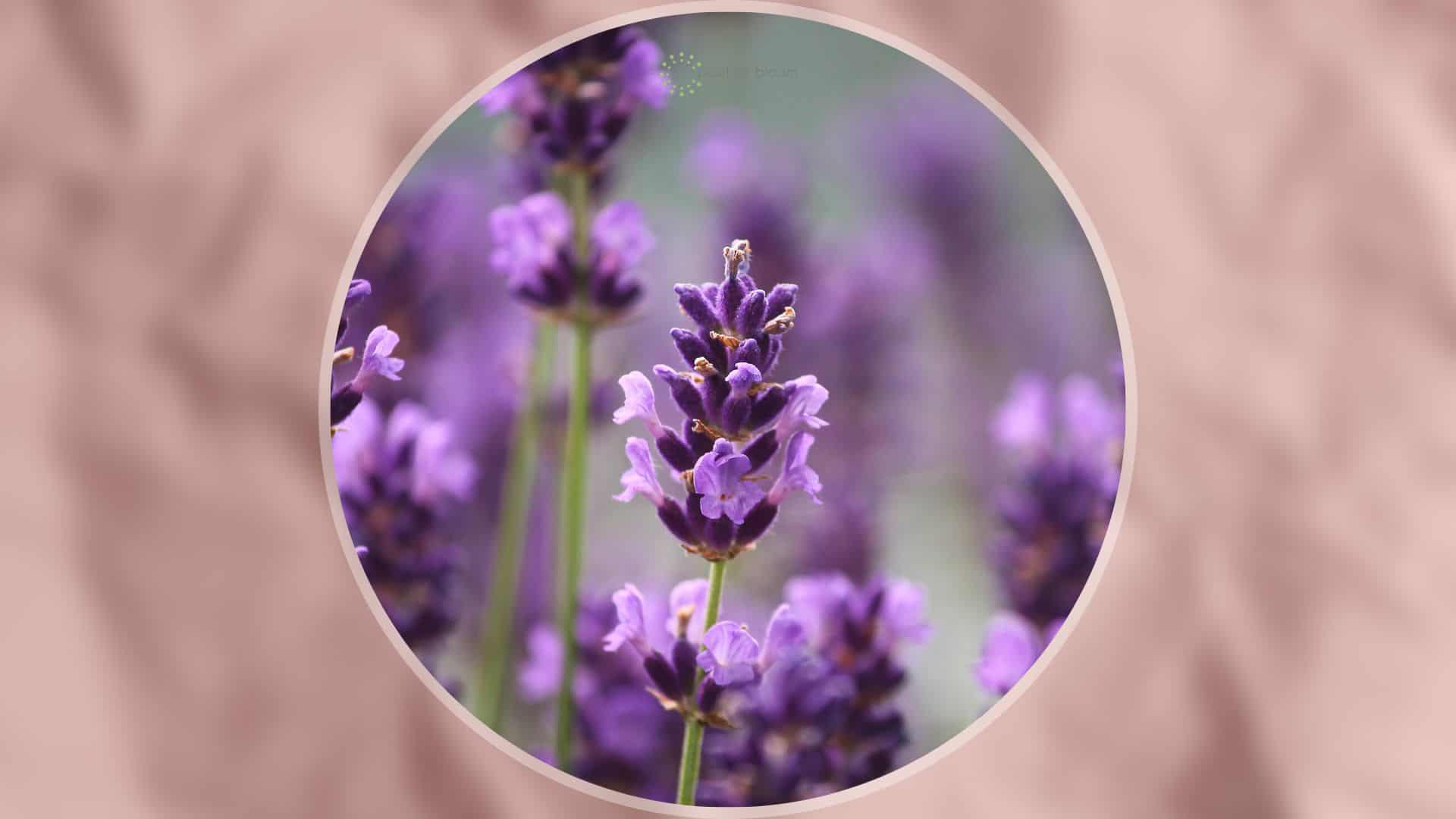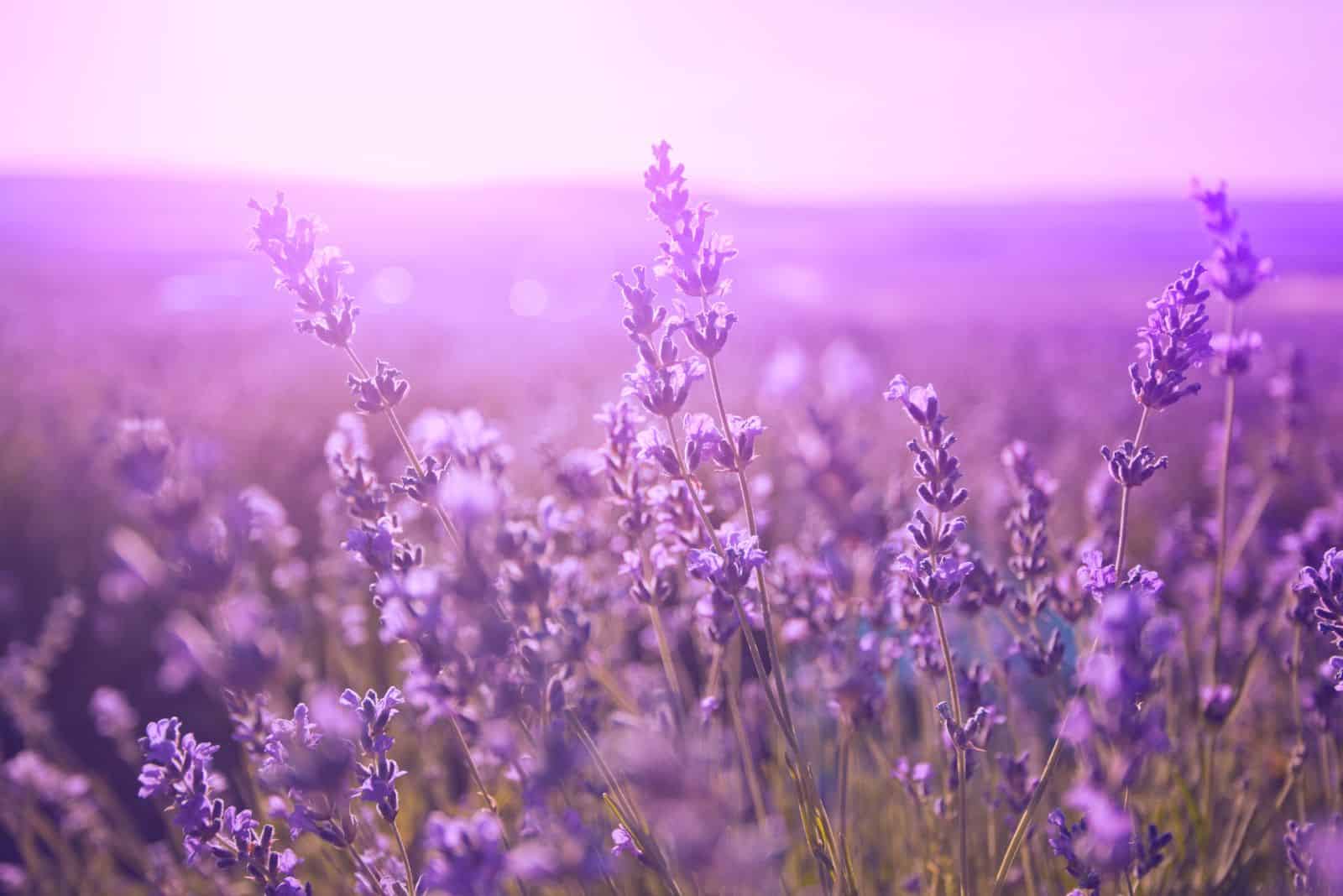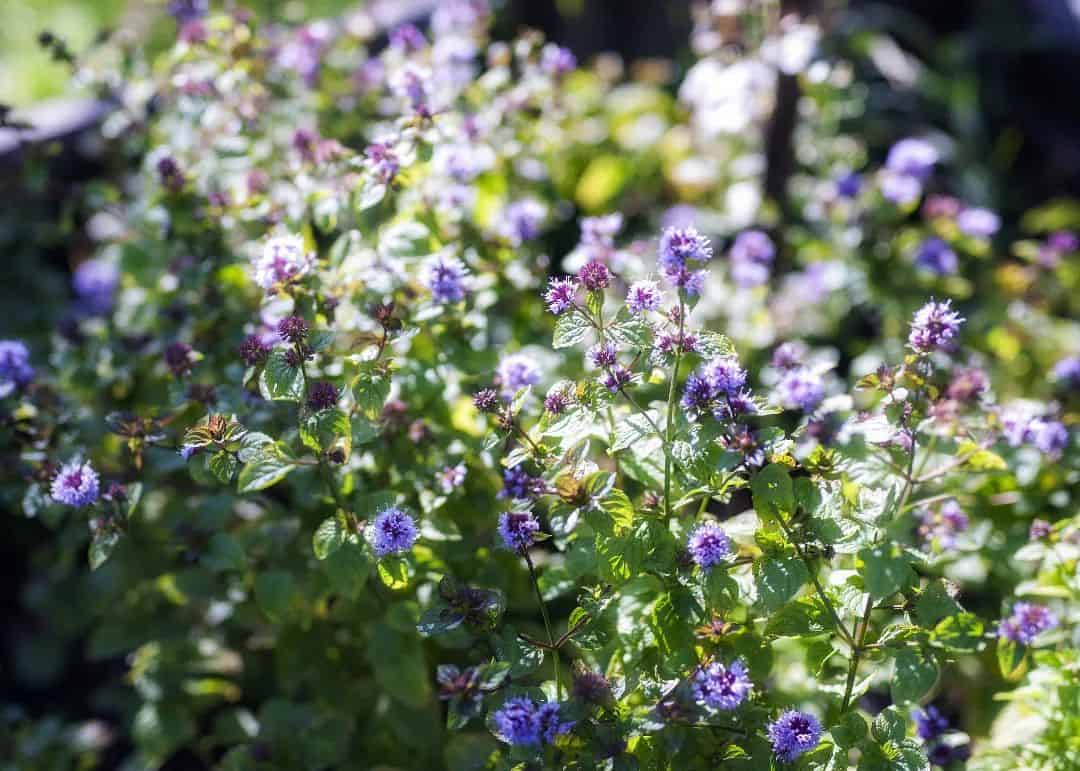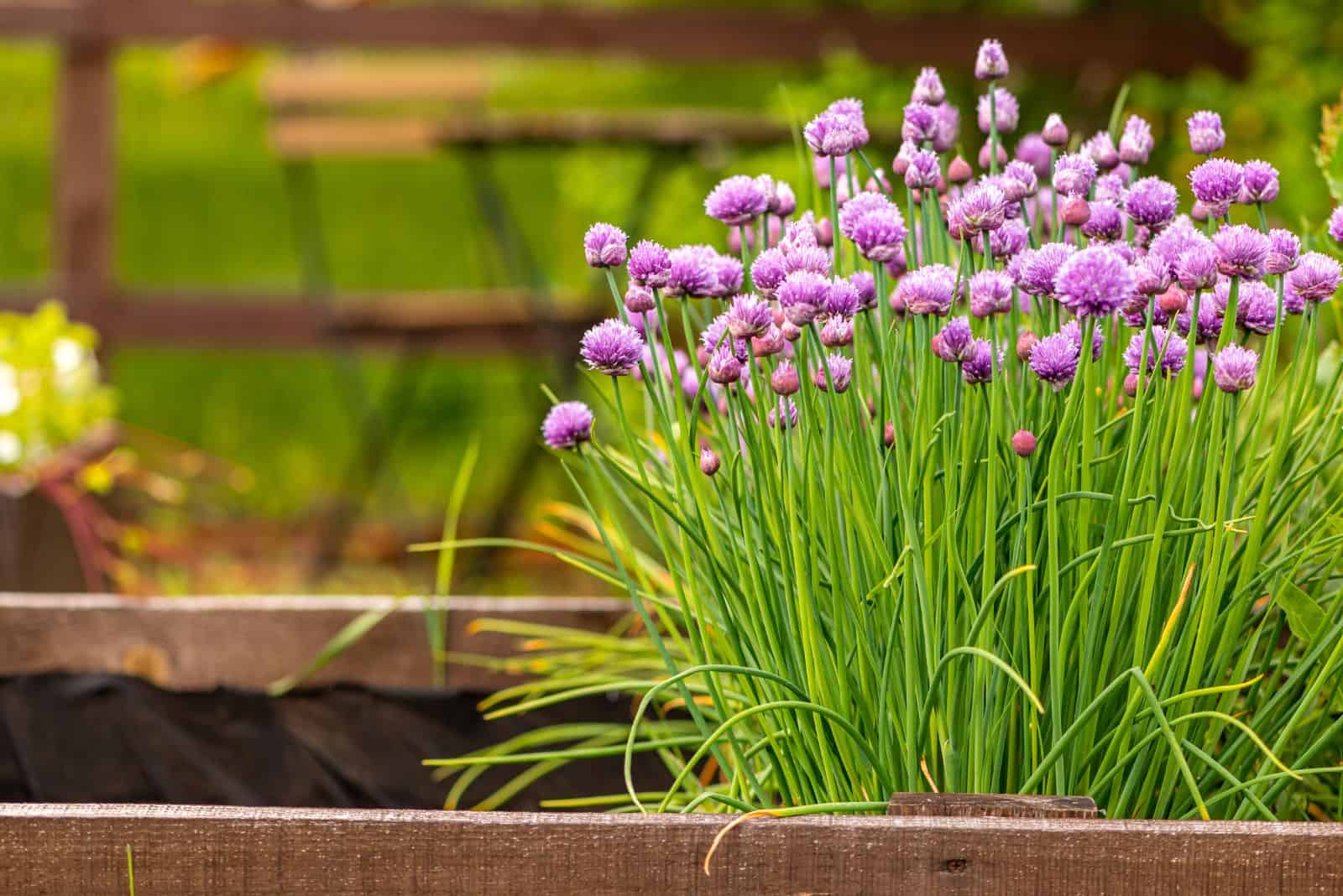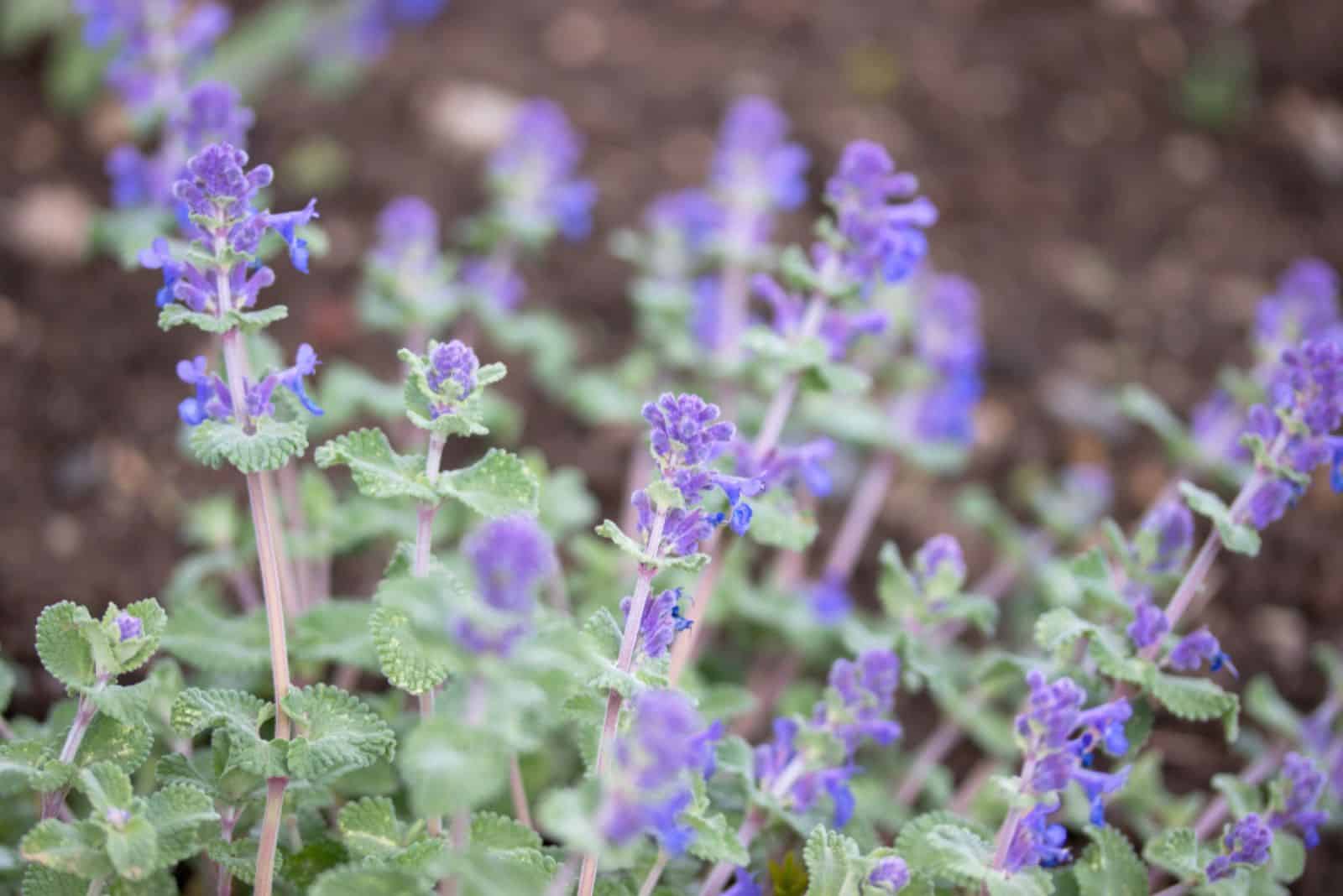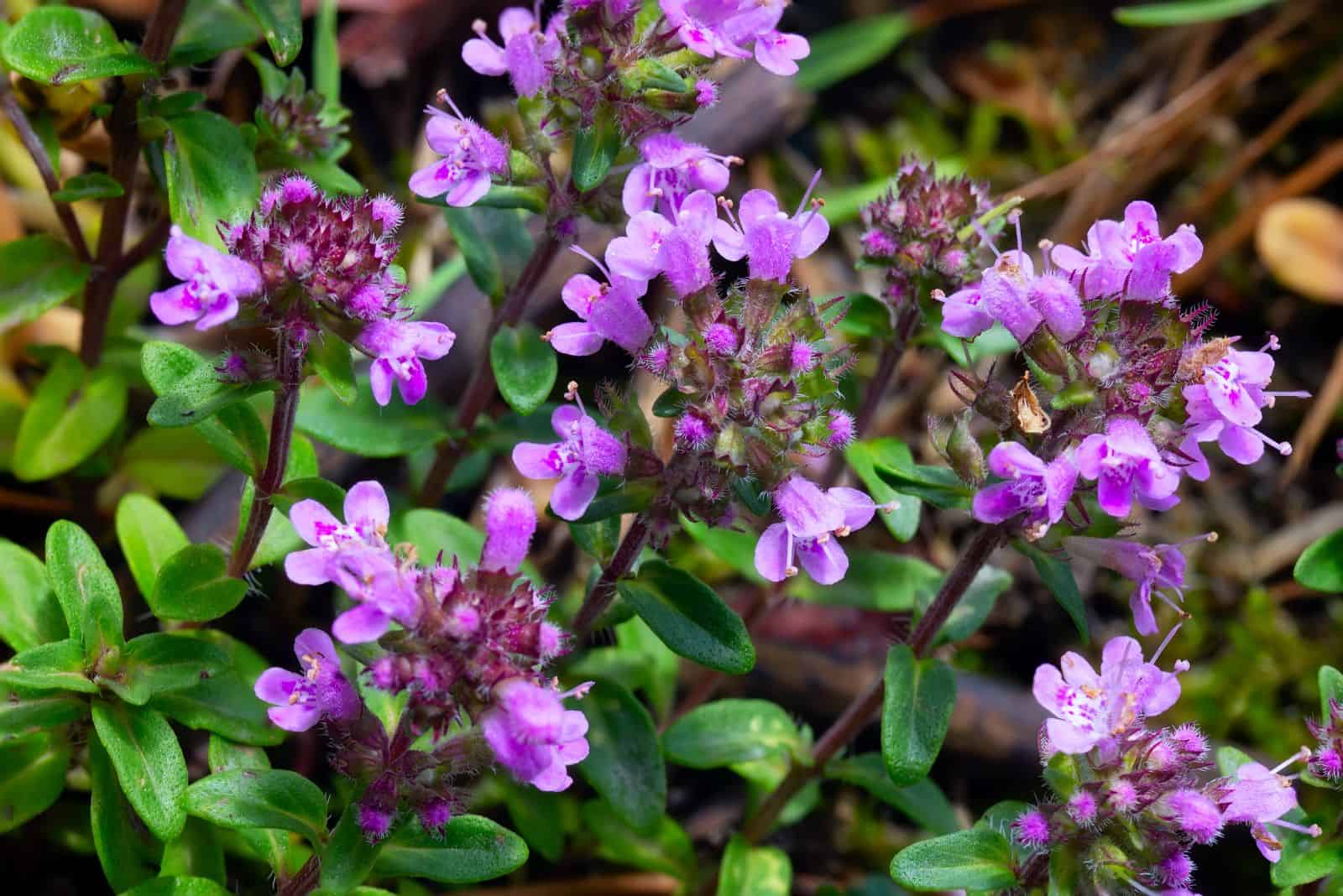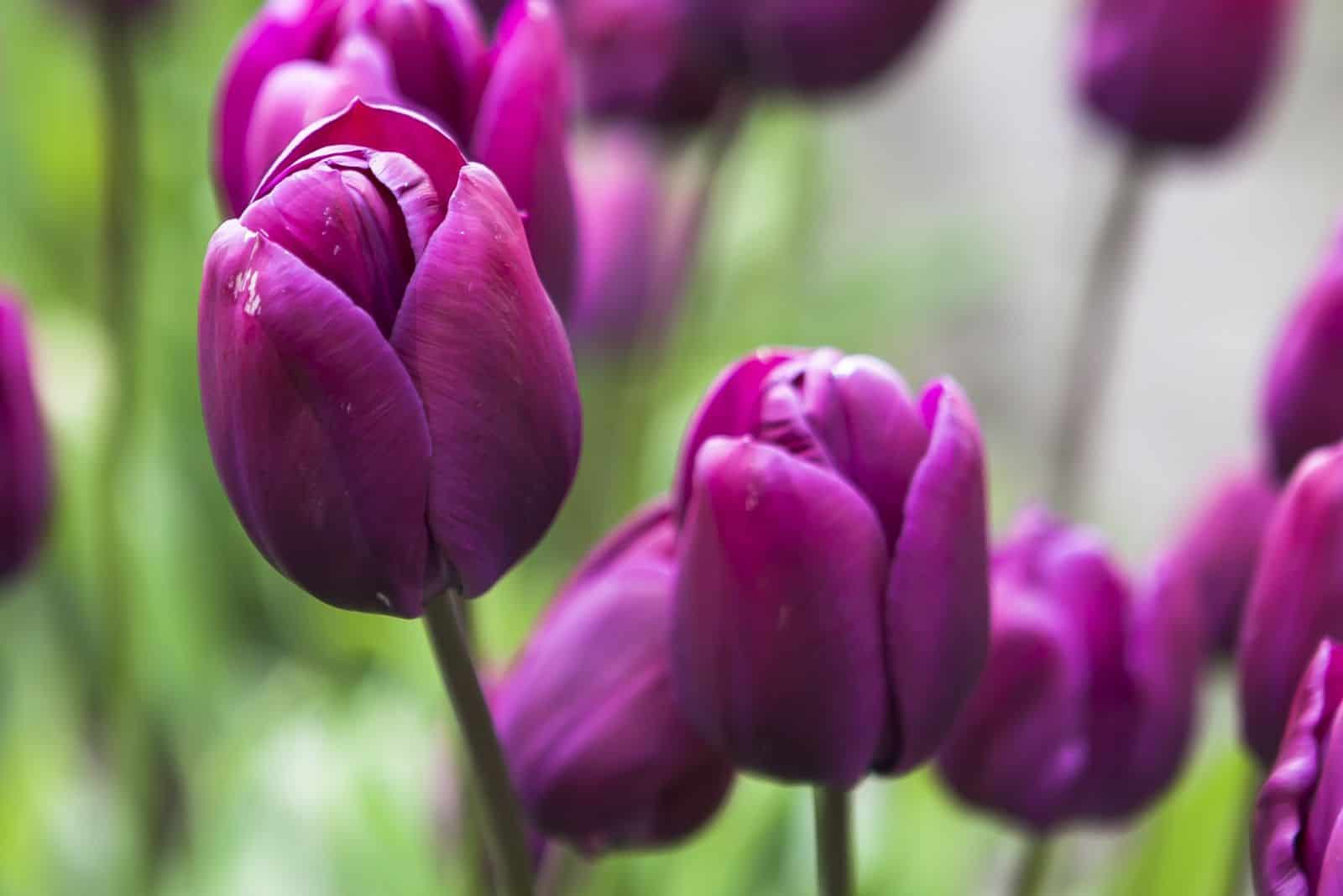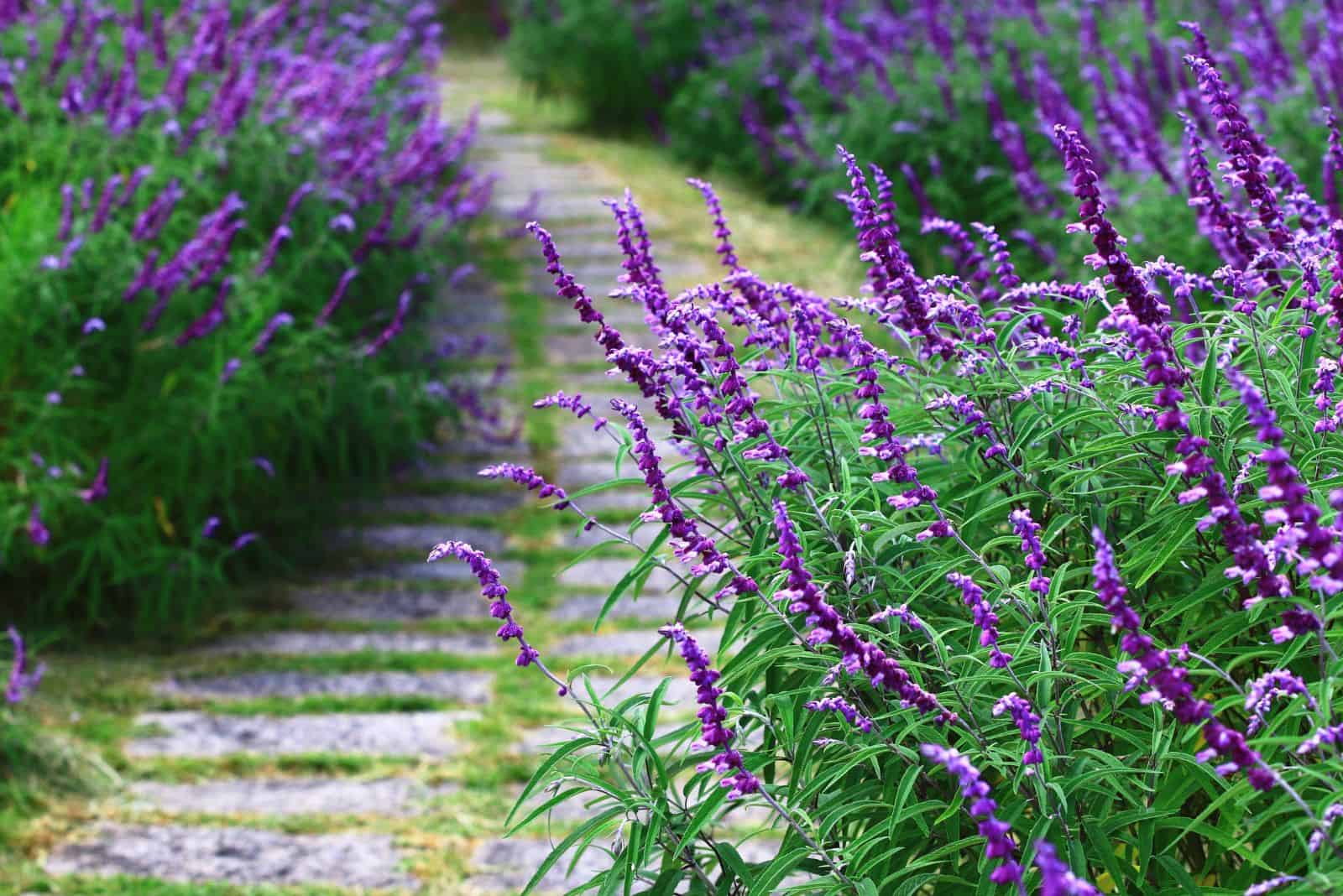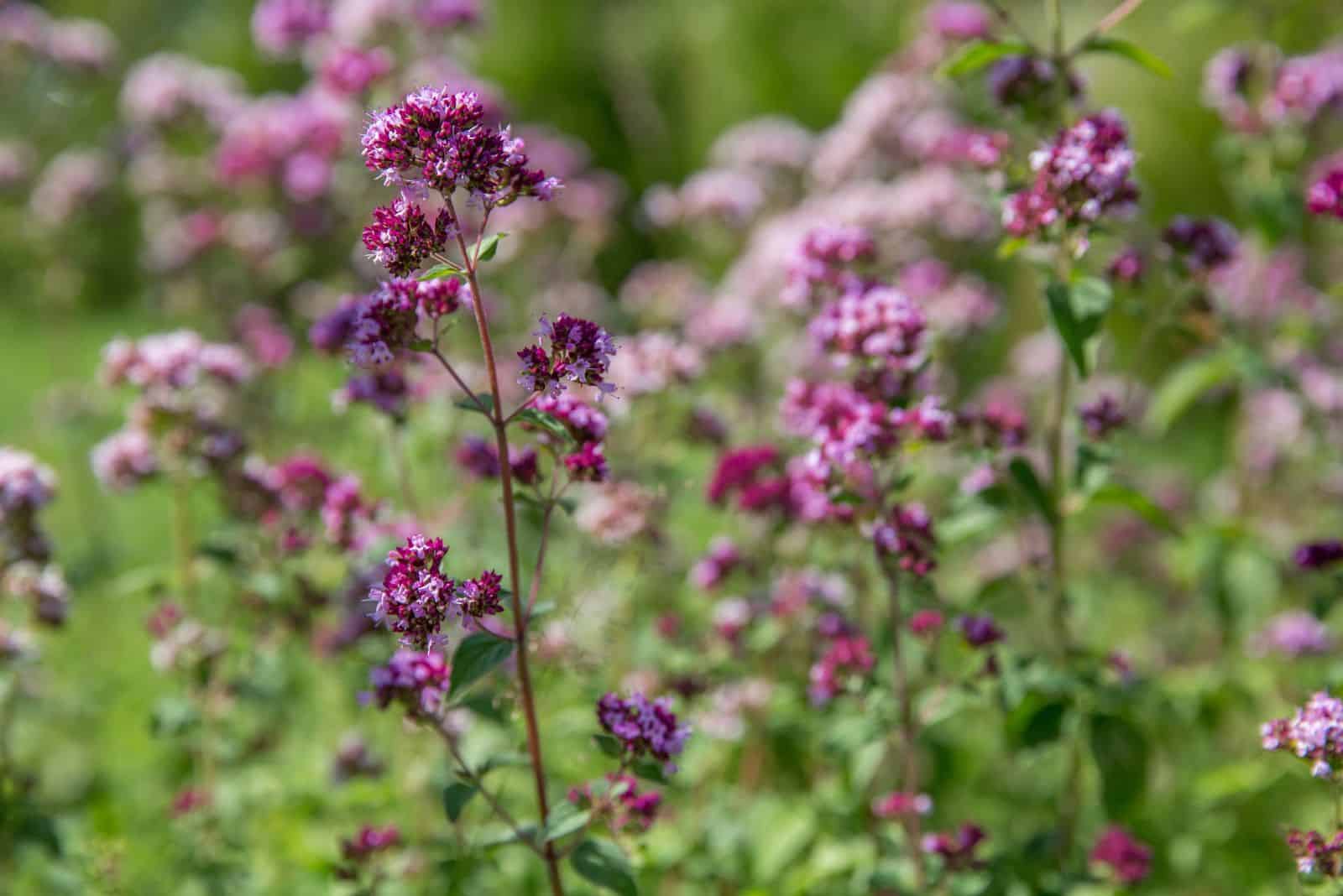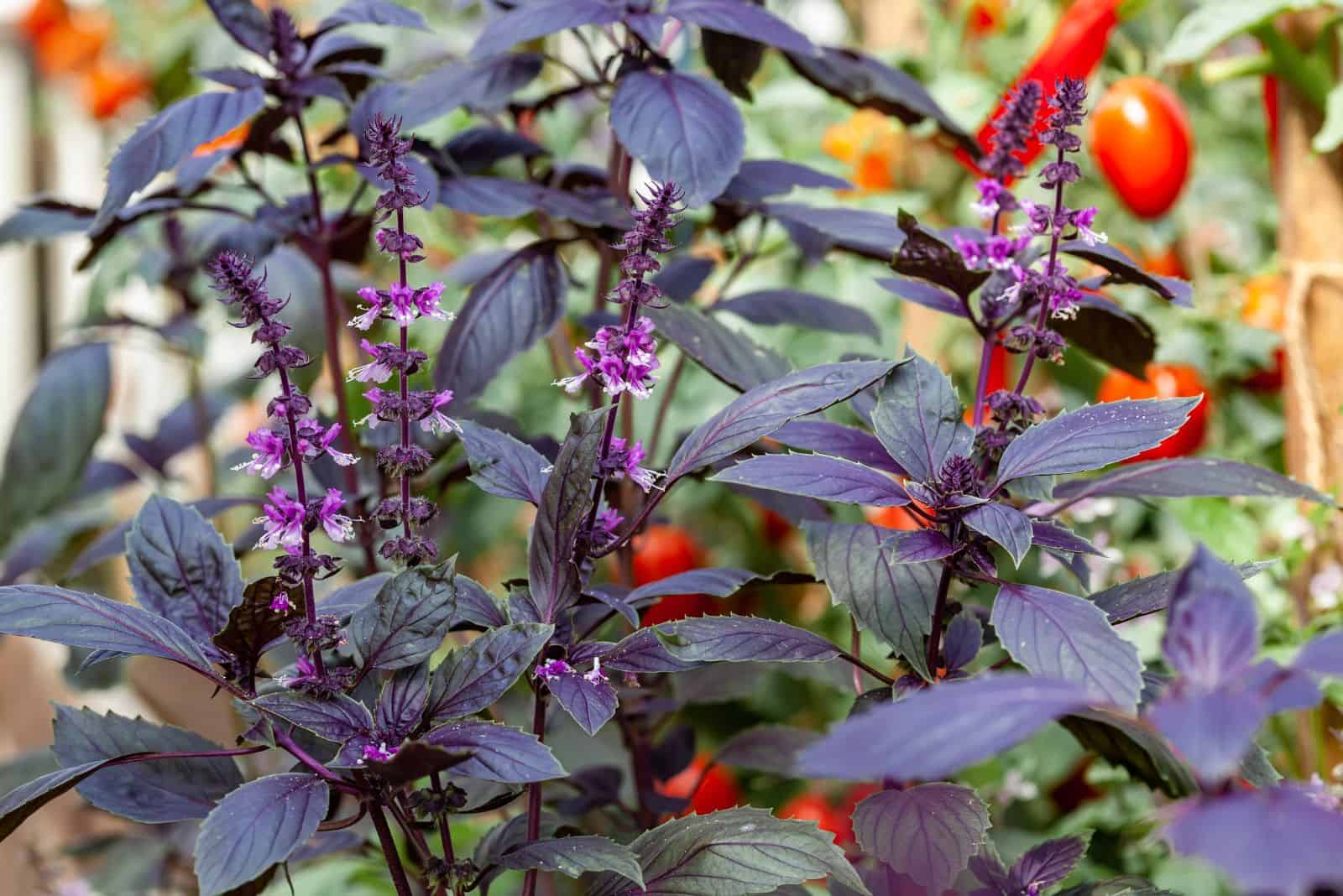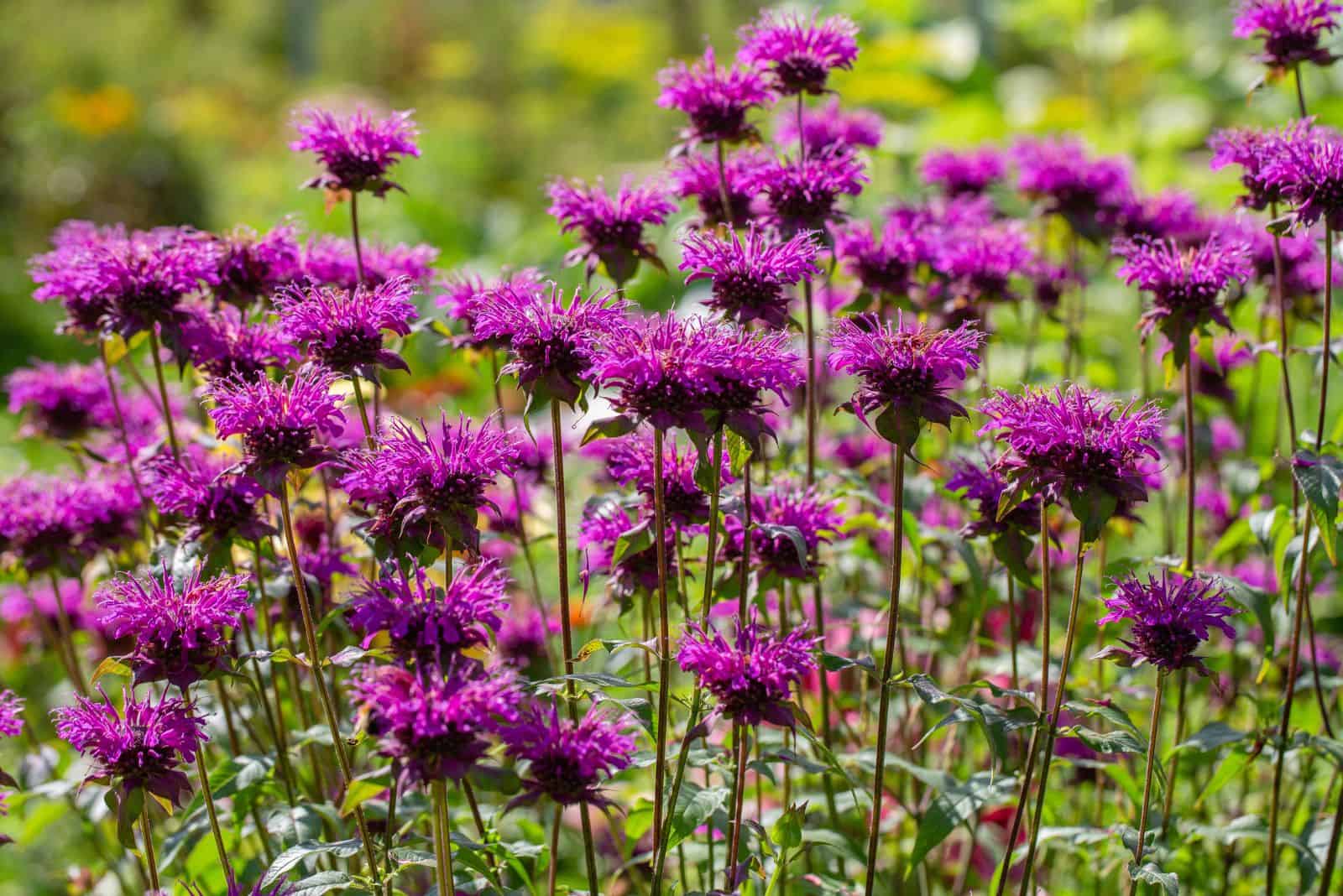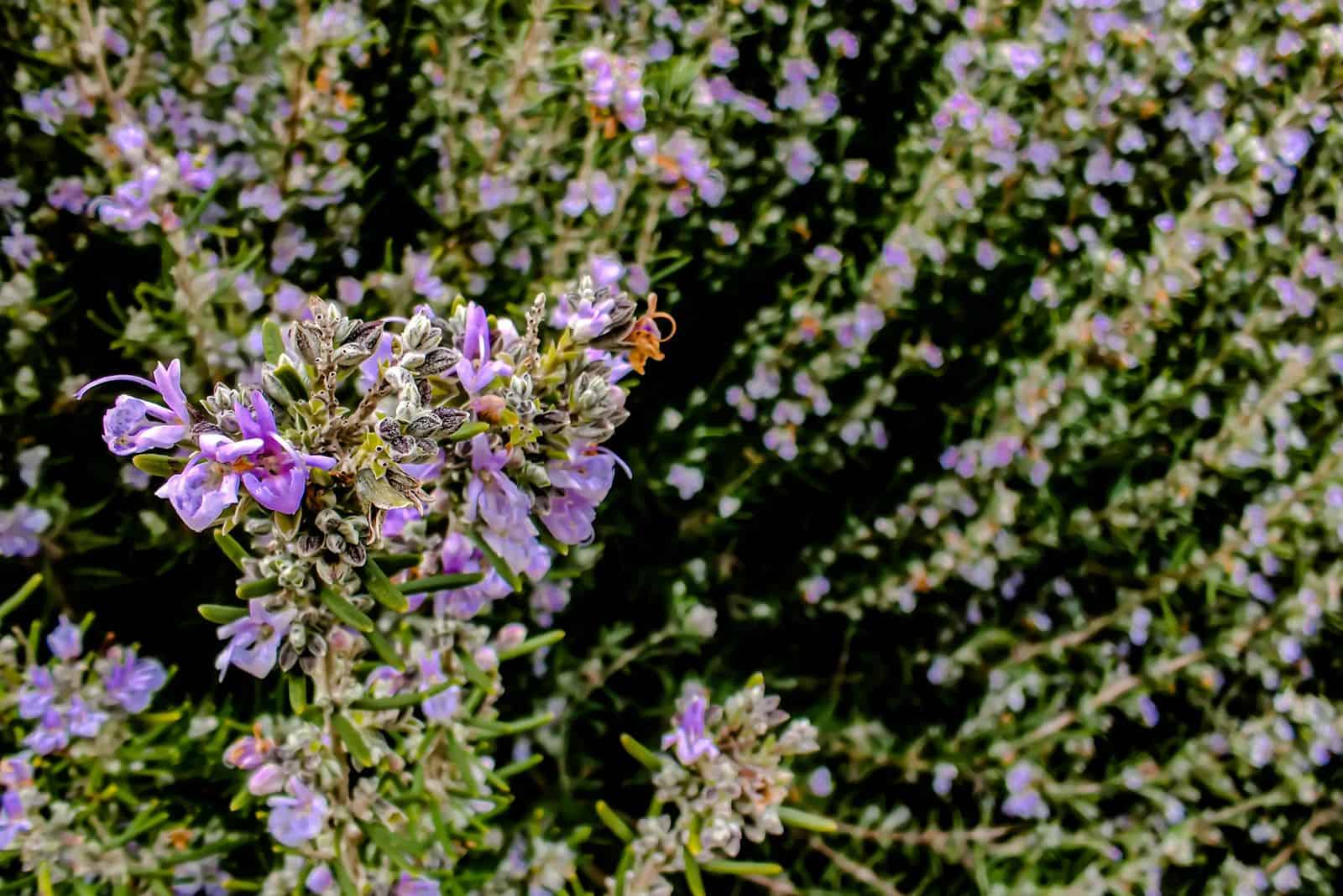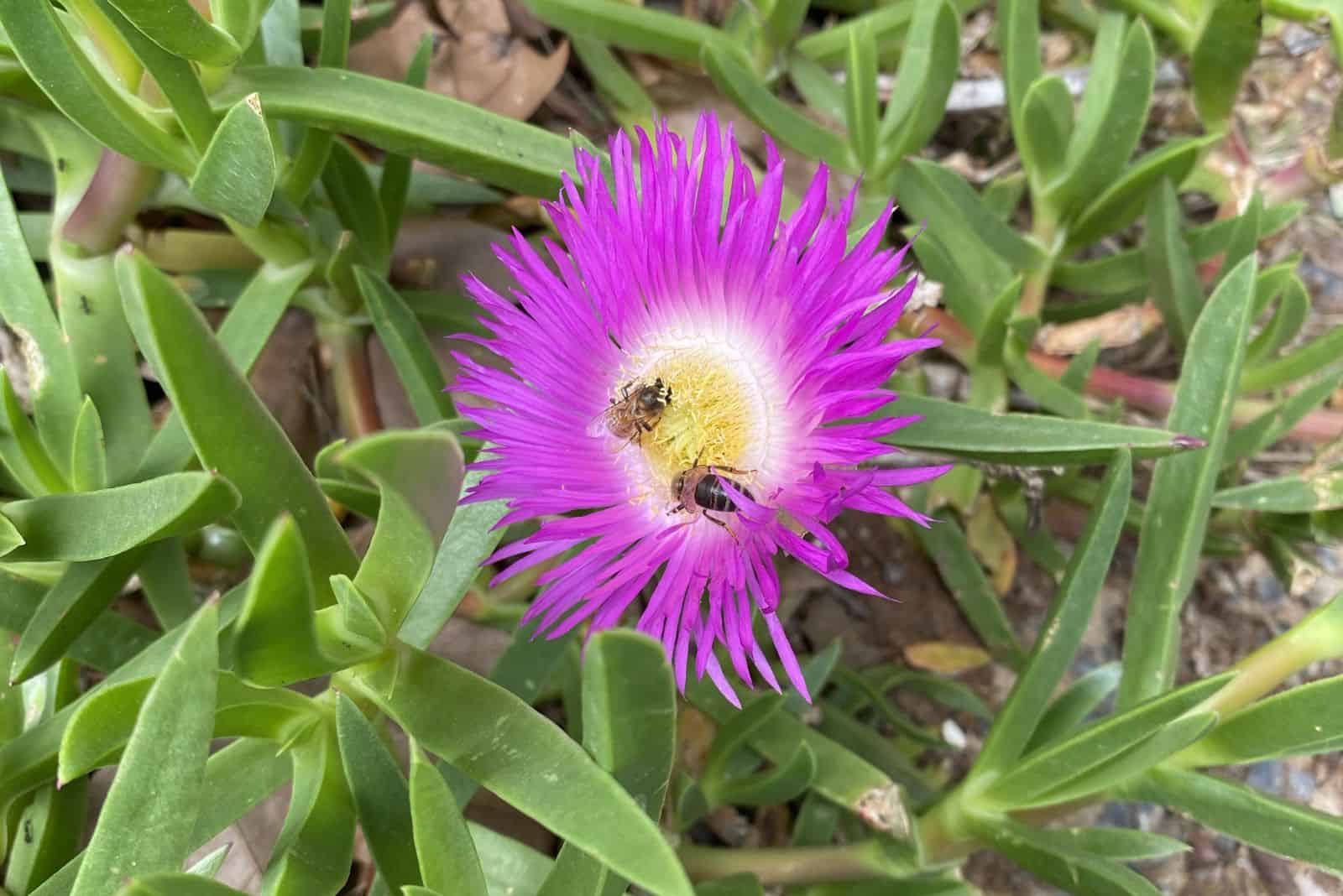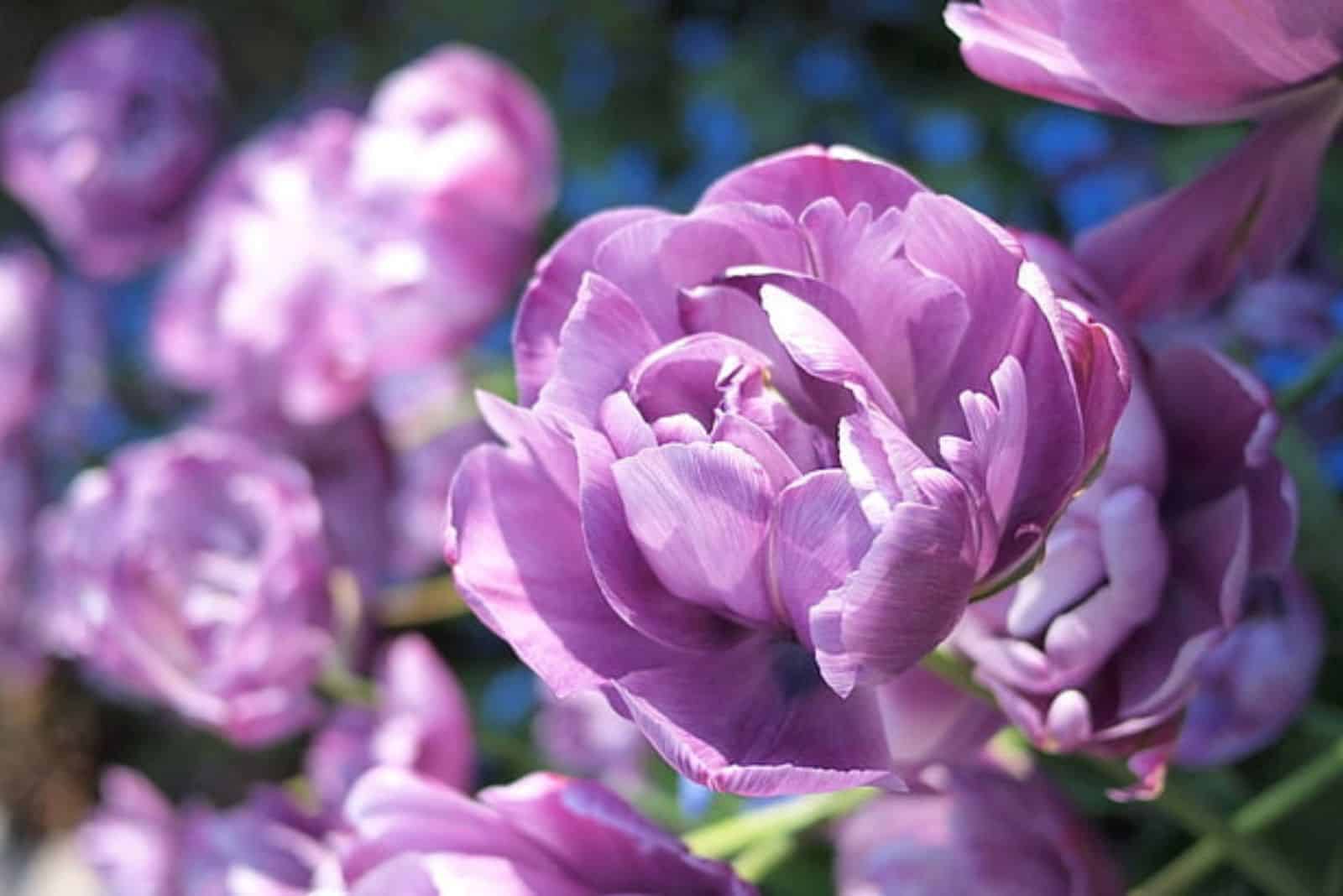Growing herbs with purple flowers in your garden has multiple benefits – first of all, your garden will look absolutely dreamy and have the most mesmerizing aroma. In addition to ornamental purposes, most herbs can be used for culinary purposes as well!
However, the most useful benefit is that you can use these herbs as natural remedies.
Herbs are generally very low-maintenance and easy to grow. You can also grow herbs in pots if you don’t have enough garden space. If you want to add some purple to your garden or home, then you should definitely take a look at all the awesome herbs with purple flowers down below!
14 Herbs With Purple Flowers
Although there are numerous varieties that produce purple flowers, we have found the prettiest herbs that you can grow almost anywhere!
Most of them are popular herbs, such as chives, peppermint, oregano, basil, lavender, and so on.
Let’s dive right in!
1. Lavender
You are probably already familiar with lavender, which is scientifically known as Lavandula. It belongs to the mint family “Lamiaceae”. Any garden can benefit from the fragrant, drought-tolerant lavender plant.
Although they thrive in drier regions like the Mediterranean, you can effectively grow them almost anywhere if you follow the right plant care guide. The fact that these plants are largely disease- and pest-resistant is one of the qualities that gardeners appreciate most.
The most popular variety is definitely English lavender. It thrives in USDA hardiness zones 5 to 9. Two English cultivars, Hidcote and Munstead, start blooming in the late spring or early summer.
Hidcote normally produces flowers only once per season, whereas Munstead has a second in which purple-blue flowers appear after the first ones have been harvested or deadheaded.
Other famous varieties include Spanish lavender, French lavender, and White lavender.
2. Peppermint
Flowering peppermint is a herbaceous plant that is actually a hybrid between spearmint and watermint, which is why it is scientifically known as Mentha x piperita. This plant’s vigorous growth makes it look like a tiny shrub, and its tall stems with needle-like leaves and purple flowers only emphasize its beauty!
It also smells absolutely amazing (seriously, my entire garden smells like soothing peppermint!).
Select a place in your garden where they can receive plenty of sunlight, and bear in mind that they also require well-draining soil and occasional watering. Popular peppermint relatives are Strawberry mint plant and Apple mint.
Some of the health benefits that come from peppermint include improved memory, help with digestion, headache relief, in addition to peppermint tea being great for the common cold!
3. Chives
Chives, otherwise known as Allium schoenoprasum, actually belong to the onion family. These perennials have unique purple flowers that grow on long green stalks. As you probably know, this plant is commonly used in cooking and can make a simple dish ten times tastier!
However, it has another great benefit – chives are one of the best snake-repellent plants out there, so if you have snake issues you should definitely consider planting chives in your garden.
Although you might think that these plants smell bad, pollinators and beneficial insects don’t agree. In fact, they absolutely love these little purple flowers, which is why chives are also a great companion plant.
It prefers soil types that are nutrient-rich and areas that have some shade. They are also excellent because they can withstand quite harsh winters in cool climates.
4. Catnip
The Nepeta Catatria, commonly known as catnip or catswort, originates from Eastern Europe, Central Asia, and Middle East. It belongs to the Lamiaceae family. This beautiful herbaceous plant has tiny, triangular, brown-green leaves and aromatic purple flowers.
These flowers have a mint-like flavor and grows rather densely. The plant can grow up to 40 inches tall, so make sure to provide it with enough space. It loves full sun and well-draining soil.
This herb is rich in antioxidants called flavonoids, which means that they provide a lot of benefits to our health, such as reducing anxiety. Some also claim that it is good for weight loss!
5. Creeping Thyme
Thymus serpyllum, also known as Creeping thyme, is a low-growing type of thyme that is often used as a ground cover. It grows 2 to 3 inches tall and its leaves and flowers are cute and tiny.
The flower color can vary between pink, purple, red, or white (depending on the variety), and they are great for attracting butterflies and other pollinators into the garden. Besides being grown as a ground cover, Creeping thyme also looks great in rocky gardens and walkways, though it can be used as a border plant as well.
This herbaceous plant also belongs to the Lamiaceae family. Creeping thyme is really easy to grow since it is drought tolerant. It ultimately needs well-draining soil and a lot of sunshine.
Some of the popular varieties include Red creeping thyme, Pink Chintz, and Spicy orange thyme.
6. Tulip
Tulips are definitely one of the prettiest flowers that you can grow in the garden. These lovely plants originate from Southern Europe and Central Asia, though you can see them everywhere nowadays!
This fast-growing herbaceous plant usually gets about 12 to 16 inches tall. The color of their symmetric flowers can vary between pink, yellow, purple, white, and red. In fact, specific tulip colors symbolize different things. For example, purple tulips represent elegance and royalty.
For your tulips to produce those gorgeous flowers, they require at least six hours of direct sunlight each day. They also prefer a medium that drains well, like sandy soil combined with soil additives that improve drainage.
Finally, they require 2/3 of an inch (17 mm) of water per week. If it’s raining, you should avoid watering them because doing so can cause the bulb to rot.
7. Sage
Salvia officinalis, otherwise known as sage, is a herbaceous subshrub that produces beautiful blue to purple flowers and gray to green leaves on woody stems. It comes from the Mediterranean region.
Sage is commonly used for cooking due to its delicious flavor, but it is also used as a remedy – it is good for sore throats, memory loss, digestive problems, and bloating.
It can sometimes be hard to distinguish between sage and lavender, but lavender has more soft purple flowers, whereas sage’s flowers vary from blue to purple. Sage is also not toxic, but it doesn’t smell as nice as lavender.
However, growing lavender and sage is pretty similar – sage also needs at least six hours of sunlight, warm temperatures, and a little watering to thrive.
8. Oregano
If you love pizza, then I would definitely suggest you grow oregano in your own garden. Besides getting a delicious spice, it will also make your garden look lovely. It is grown as a perennial herb in warmer climates, but it can also be grown annually in cooler regions.
This delicious herb originates from the Mediterranean region, though it can also be naturally found in South East Asia and northeastern America.
It produces olive-green leaves with purple-white flowers.
As well as making every meal better, it can also improve your health. Oregano is known to improve bone strength and oral health, and it is rich in nutrients such as magnesium, potassium, manganese, and iron.
Oregano is a low-maintenance plant that can adapt to different growing conditions. It thrives in full sun and dry environments, and is also a great companion plant to yarrow.
9. Basil
Cinnamon basil and Christmas basil produce lovely purple flowers that combine ideally with dark-green foliage. Basil is my favorite herb, primarily because you can add it to many dishes including pasta, chicken, pizza, and seafood… the possibilities are endless!
Basil is also very easy to grow – it thrives in moist and well-draining soil, along with moderate temperature and humidity. Be careful about the watering because it can easily lead to basil plants wilting and dying.
This herb is also a great companion because the strong scent can attract pollinators and deter pests and insects that would otherwise destroy the plants in your garden at the same time.
10. Bee Balm
The Monarda didyma, often known as bee balm, starts blooming in July and lasts until the end of summer. Its tubular flowers come in white, pink, purple, or red, and attract a variety of pollinators.
It thrives in full sun and can be grown in USDA zones 3 through 9, while warmer regions may require it to be partially shaded. You shouldn’t allow the substrate to be overly moist or fully dry because this perennial plant needs fertile soils with good drainage.
11. Anise Hyssop
The Anise Hyssop, also known as Agastache foeniculum and the Blue giant hyssop, is a perennial herbaceous plant that belongs to the Lamiaceae family. It originates from North and Central America.
It produces green, oval-shaped leaves with white undersides. In addition to these lovely leaves, the Anise hyssop also produces pretty purple flowers in false whorls that bees absolutely love. They usually bloom from July to September.
In addition to ornamental purposes, Anise hyssop is often grown for culinary and medical purposes – it is known to treat wounds, coughs, and stomach issues.
When it comes to plant care, this herb requires a lot of sun, though it can tolerate partial shade. It is drought-tolerant, so you don’t have to worry about watering; however, it needs to grow in well-draining soil.
12. Rosemary
Here is yet another herb that originates from the Mediterranean region!
Salvia rosmarinus, or simply rosemary, is an aromatic plant that produces needle-like green leaves on tall stems. It will make your garden and kitchen smell absolutely amazing.
Rosemary has dreamy purple flowers, though they can vary between pink, blue, and white depending on the variety. They start blooming in spring to late summer, though some varieties can start blooming in February.
This herb is low-maintenance – all you have to do is put it somewhere they can receive a lot of sunlight and with good air circulation. They also need well-draining soil and some nutrients. You can grow it in pots as well, just make sure to find the perfect rosemary planter.
13. Echinacea
The Echinacea, or coneflower, is a herbaceous flowering plant that belongs to the daisy family. They are native to North America and have large flowers that look like sunflowers – they can even grow up to 5 feet tall!
The center of this flower is prickly, which is how it got the name “echinacea”. It is derived from the Greek word “echinos”, which can indicate either a hedgehog or a sea urchin. The flowers come in many different hues. One of the most stunning and well-known coneflowers is the purple variety, which stands for power, elegance, and grace.
Numerous health benefits come from this herb, such as improving skin health and the immune system, as well as lowering blood pressure. Try and make your own Echinacea tincture!
Plant care is similar to other herbs – at least 4 hours of sunlight daily and well-draining soil are required.
14. Peony
We saved the best for last!
Peonies are definitely the most gorgeous herbaceous plants that produce deep flowers. There are several flower types, such as bombe, single, semi-double, anemone, and Japanese. The color can vary between yellow, deep purple, light purple, red, coral, and pink.
The flowers appear in late spring (late May) to early summer. For roughly 7–10 days, your garden will be filled with peony cut flowers. It’s vital to remember that in addition to their beauty, the flowers will also have a beautiful fragrance.
Most peonies are herbs, though some varieties grow as woody shrubs. In addition to their aesthetic qualities, peonies can be utilized for medical purposes as well. This includes treating swelling and pain, improving fertility, preventing blood clotting, and killing cancer cells.
Growing peonies is not troublesome. They thrive in moist, well-draining soil with at least 8 hours of sunlight daily.
Wrapping Up
That was our list of herbs with purple flowers, I hope you liked it!
We chose the prettiest herbs that are packed with antioxidants and vitamins, and relatively easy to grow. Herbs are generally low-maintenance plants that can grow in harsh conditions, which is why they are ideal for decorating your entire garden.
You’ll ultimately end up with a dreamy garden and a lot of spices that you can add to your meals, and also be able to make some delicious tea.
That’s all, folks. Until next time!

